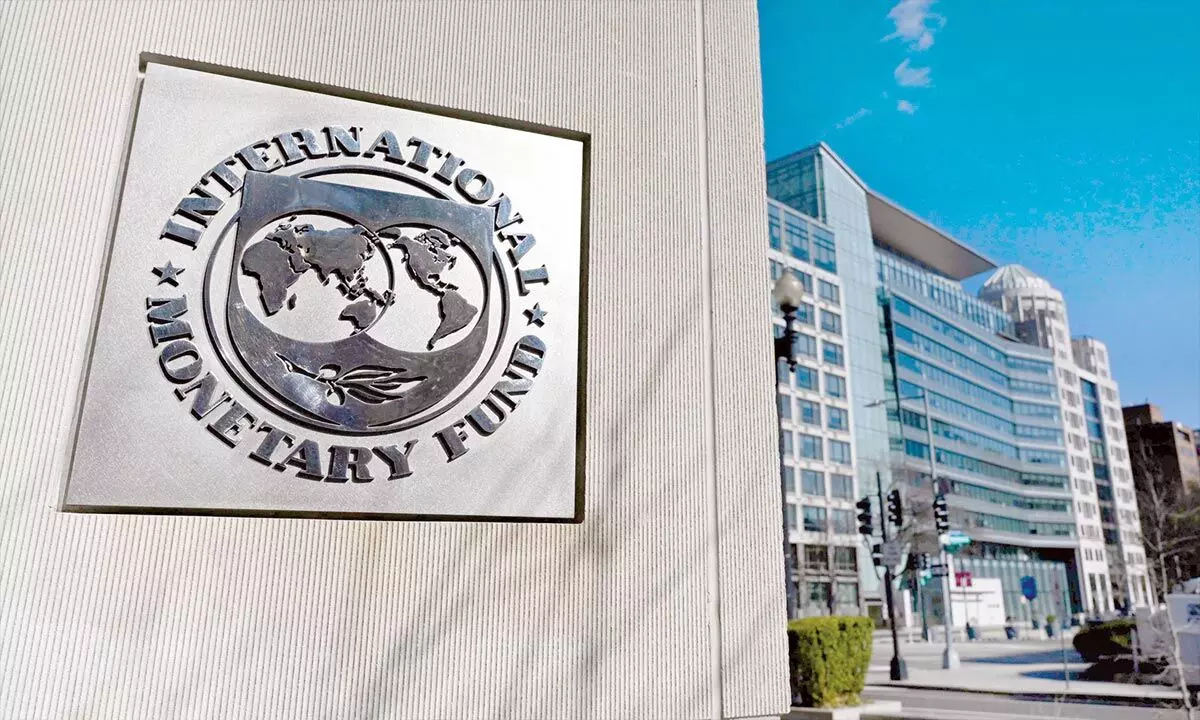IMF cut GDP growth rate as consumption slowing
It sees India’s growth at 5.9% in FY24, lower than RBI’s projection of 6.4%
image for illustrative purpose

- Slowdown in US, Europe to take a toll
- Lower capex will hit economic growth
- India still the fastest growing economy
Washington: India's growth rate has been modestly downgraded from 6.1 per cent to 5.9 per cent for the current fiscal mainly because of the slowness of domestic consumption and data revision, according to a top IMF official.
The International Monetary Fund (IMF) on Tuesday lowered India's economic growth projection for the current fiscal to 5.9 per cent from 6.1 per cent earlier. Yet India will continue to be the fastest-growing economy in the world.
In its annual World Economic Outlook, IMF also lowered the forecast for 2024-25 fiscal (April 2024 to March 2025) to 6.3 per cent from the 6.8 per cent it had predicted in January this year.
Krishna Srinivasan, Director of the Asia and Pacific Department, IMF, said the revisions to India's growth have been very modest from 6.1 per cent to 5.9 per cent and probably reflects two factors. "One is that domestic consumption growth is starting to slow, albeit modestly. The other factor is data revisions in 2019 to 2020, which suggests the economic position of India. Before the pandemic was better. The impact of the pandemic was more limited than we thought, and recovery has been stronger,” he said.
All those point to the fact that output gaps are closing, he told reporters at a news conference here. "That explains how we see the revisions to the forecast. Now, in terms of what are the risks, again, the external risks, which are the same across the region in terms of what happens to partner country growth with slowing growth in the US and Europe. "How does that affect India and market turbulence? All these are factors which are external risks to the growth forecast,” Srinivasan said.
IMF growth forecast is lower than projections by the Reserve Bank of India (RBI). RBI sees a 7 per cent GDP growth in 2022-23 and a 6.4 per cent in the current fiscal that started on April 1. The government is yet to release full-year GDP numbers for 2022-23.
Despite a significant drop in growth rate projections from 6.8 per cent in 2022 to 5.9 per cent, India continues to be the fastest-growing economy in the world, the World Economic Outlook figures revealed.
Domestically, the government is placing a lot of emphasis on capital spending, Srinivasan said, adding if that comes below what is expected, that could also weigh on growth prediction.
In response to a question on RBI pausing the monetary policy, he said that it is in line with the IMF's baseline projection. “Basically, at the current policy rate 6.5 per cent, which is such as a broadly neutral policy stance, which is consistent with how we see economic conditions in India and available information on expectations of inflation one year out, which are pretty much well anchored,” he said.
“So, again, we expect inflation to come below target this year. And in fact, in the most recent print, which came out I think yesterday or day before, inflation has fallen to 5.7 per cent, which is within the tolerance ban. So, our assessment is broadly along the lines of what we had said before. And so we are fine with what the RBI has done,” said the IMF official.
Srinivasan said growth in 2023 will be driven primarily by the recovery in China and the resilient growth in India. These two economies alone will account for about half of the global growth this year. Growth in most of the economies is expected to bottom out in 2023 in line with other regions, he said.
In Japan, growth is expected to pick up slightly to 1.3 per cent in 2023, supported by expansion in the monetary and fiscal policy stance. The downgrade related to last October reflects weaker demand in investment and carryover from disappointing growth in the last quarter of 2022, he said. “In India, growth momentum will begin to slow, as softening domestic demand offsets strong external services demand. Growth is expected to moderate slightly from 6.8 per cent in 2022 to 5.9 per cent this year,” he said.
The revisions to India's growth probably reflects two factors. One is that domestic consumption growth is starting to slow. The other factor is data revisions in 2019 to 2020. We expect inflation to come below target in India this year.
- Krishna Srinivasan, Director, Asia and Pacific Department, IMF

